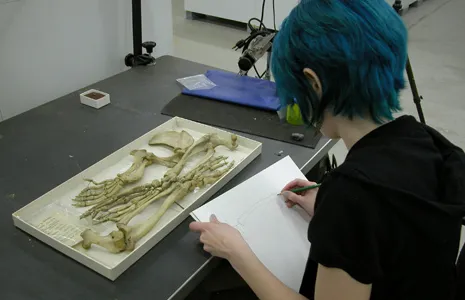Flippers, Jawbones, and Blowholes: Marine Specimens Inspire Artists

Rachel Caauwe was one of a dozen artists who spent a recent Saturday sketching specimens from the Smithsonian's musky-scented marine mammal collection. Here she's shown drawing the remains of a harbor seal (Phoca vitulina). The workshop, organized by the Guild of Natural Science Illustrators, focused on larger whales. "I was quite overwhelmed by the scale of some of the specimens," said Caauwe. Specifically: the jawbone of a sperm whale. Caauwe studied illustration and biology at Northern Michigan University and focuses on creating colorful art that illuminates biology and behaviors in the natural world. It's a skill that scientists like Charles Potter rely on. Potter manages the Smithsonian's marine mammals collection and says that a good illustration always trumps a photograph because the "illustrator is able to capture the essence of the object, rather than a mere reflection." You can browse through the work of some of Caauwe's predecessors on the National Museum of Natural History's Paleo Art website.

